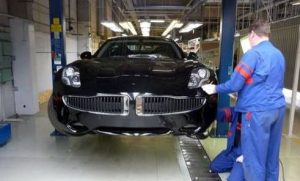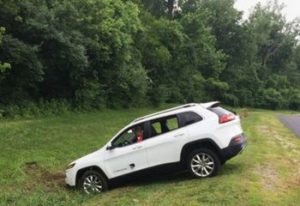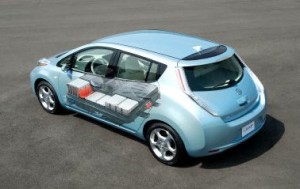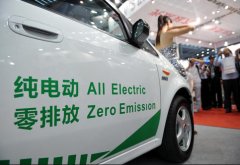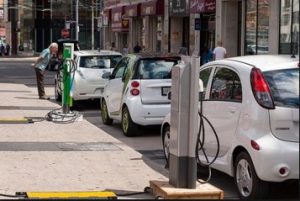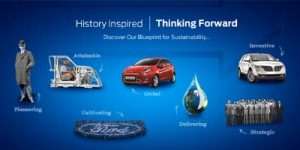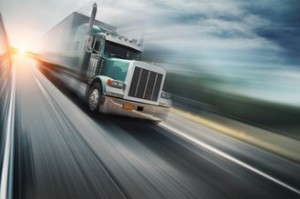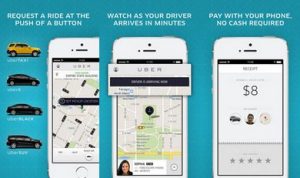 Earlier this month, Uber celebrated its five-year anniversary since startup. CEO Travis Kalanick spoke to an audience at the company’s hometown of San Francisco and said that Uber provides more than one million rides per day, and does business in more than 300 cities in 30 countries around the world. He paid tribute to Uber drivers delivering service to riders while driving their own cars. Kalanick also ticked off a list of Uber’s contributions: less traffic congestion, cleaner air, and more jobs.
Earlier this month, Uber celebrated its five-year anniversary since startup. CEO Travis Kalanick spoke to an audience at the company’s hometown of San Francisco and said that Uber provides more than one million rides per day, and does business in more than 300 cities in 30 countries around the world. He paid tribute to Uber drivers delivering service to riders while driving their own cars. Kalanick also ticked off a list of Uber’s contributions: less traffic congestion, cleaner air, and more jobs.
The number of trips being completed each day, and the revenue coming from those trips, have been booming in growth rate this year. Uber forecasts that its net revenue, or the amount it keeps after paying out drivers, will be more than $2 billion this year. That would be five times its 2014 net revenue of about $400 million. There’s also been extremely high valuation for the company – $41 billion – placed by investors in a recent funding round. Along with competing directly with taxi and limousine services for rides, Uber is investing heavily in package and cargo delivery, food deliveries, and setting up a strong presence in China through a $1 billion investment.
The company, called Uber Technologies Inc., is finalizing a $2 billion credit line with seven banks (compared to Tesla Motors’ recent addition to have access to a $750 million credit line); that five-year facility for Uber, known as a revolver, would be priced a half-percentage point lower than already competitive rate initially discussed, sources said. Analysts are pondering whether securing that large credit line from Wall Street will lead to an initial public offering (IPO) on the stock market, which that type of financial arrangement usually precedes. Kalanick didn’t mention the possibility of taking the company public during his five-year anniversary speech, but it’s possible that could be in the works.
Uber also faces a huge challenge that could shape its future; that challenge comes from a California Labor Commission decision last week that an Uber worker was in fact an “employee” – and not an independent operator as Uber has argued. The ruling awarded just over $4,000 to the Uber driver who filed the case; it ties into a separate class-action lawsuit brought by Uber drivers, where a federal judge is asking the jury to decide whether Uber drivers are indeed employees. The question becomes whether Uber will be spending a lot of its investors’ money fighting these cases, or if the company will be adjusting its financial model to pay more to drivers.
Uber also continues to fight the taxi and limousine industries for access to airports, and the right to do business, in cities throughout Europe and the US. Uber is taking away more business all the time from these transportation institutions. The New York Times reported that US airports are becoming more willing to try out allowing Uber and other ridesharing companies to have access to the airports – as a fee revenue source and because consumers are demanding access for Uber to drop them off and pick them up at major airports. Taxi and livery companies have been fighting ridesharing companies from having access to their markets without paying medallion and trip fees that they’ve had to pay all these years. Analysts warn Uber and other ridesharing firms about the liability issues they’ll face if there are a few serious collisions caused by Uber drivers that lead to class-action lawsuits.
San Francisco has been a hotbed of new transportation technologies and business models. Two other ridesharing (or sometimes called “car-hailing”) service providers, Lyft and Sidecar, also started up in that city. Carsharing services have also taken off in that metro area, along with electric vehicle adoption. All of this seems to come from the influence of Silicon Valley, and from area residents who prefer BART rides and transportation alternatives over having to take taxi rides or driving their car into a city where it’s extremely difficult and expensive to park. Uber says that about half its trips in San Francisco are ridesharing transactions, where passengers can save money on the trip by sharing the ride with somebody they don’t even know. Drivers must be willing to have somebody riding in the passenger seat next to them, and have two-or-three people riding in the backseat.
Uber is yet another example of how a new business model shaped by a mobile technology can disrupt and transform a market at a rapid pace. As automakers, Tier 1 suppliers, and transportation companies such as car rental and delivery companies, make strategic plans for the next 10-to-20 years, here are some of the issues affecting their future:
Millennials (late teens to early 30s) are extremely pragmatic about transportation: They make up the vast majority of Uber’s customers. Unlike previous generations, Millennials are not as likely to get their driver’s license on or near their 16th birthday, and are tending to move into cities for work and lifestyle choices. Millennials are much more interested in getting a ride from a friend; taking a bus or train ride; walking; riding their bike; or whatever may make the most sense at that time and place. Many of them like the ease of use and coolness of using Uber – it’s right there on your phone and picks you up in five-to-10 minutes.
Why ever take a taxi ride again?: Getting a ride with Uber is about half the price of a taxi ride. You can do it quickly on your mobile device rather than booking an hour or so ahead of pickup, which is typical for taxi rides. Uber is ready to pay the driver automatically, once the passenger has set up their Uber account. Taxi riders pay for the trip using a card swipe in the back seat, which adds to the process and asks the question of whether or not you want to tip the driver. Uber riders are reassured that tipping is not a requirement. Uber passengers tend to like Uber drivers more than taxi drivers. That’s likely why Uber, Lyft, and Sidecar all started in San Francisco – a city where residents want more cost-effective and efficient transportation options. It’s also a city that has taxi drivers known for being just as aggressive as they are in New York City, many times cutting across lanes to beat other cars through the traffic. Some Uber passengers may want to chat with their drivers, asking them what it’s like to drive for Uber and how to beat stalled-out traffic.
Job opportunities in a fast-changing economy: Uber is exploring entry into other market segments like a food-delivery service (UberEats) and package delivery (think FedEx and UPS) that would probably need employee drivers; or independent contractors working structured schedules very similar to what employee drivers are given. For now, Uber drivers (which they call “Uber partners”) are independent contractors driving passengers in their own cars and paying all the operating costs. That may be changing in the wake of the California Labor Commission ruling, but for now self-employed Uber drivers are doing the work. Uber drivers appreciate the opportunity to make side income, and sometimes full-time income, in a job market different than it was just a few years ago. Some of these drivers have been laid off jobs in recent years or had their job duties increased in a reorganized work environment. They appreciate the flexibility and choice they’re given driving for Uber. One of Uber’s recent cable TV commercials shows the benefits drivers can gain, such as a mom picking up kids after school or a musician gaining extra time to practice for that next gig.
Research firm Benenson Strategy Group released study findings in December on Uber drivers showing that the drivers’ major reason for working with Uber is because it allows them more autonomy. Nearly nine out of 10 Uber drivers report that “being their own boss” and being able to set their own schedule was a primary reason they’re driving for Uber. The study also showed that the drivers are in a different generation than their passengers. More Uber drivers are over 50 than are under 30. In today’s work environment, employees over 50 are finding that there’s more pressure to retire, or are facing layoffs to make room for younger employees costing the company much less in labor expenses. That’s been in the works for several years – driven by globalization of the economy, advanced technologies changing the very nature of the work environment, and a heightened demand being made for increased profitability and efficiency – as taxi drivers are experiencing while Uber takes more of their customers away.
Ubiquitous in media coverage and in conversations: In a tribute to retiring late night talk-show host David Letterman, TV star comedian Ray Romano said that without appearing on “The David Letterman Show” in the 1980s, he would have never made it. “Without that moment, I’d be your Uber driver today,” Romano wrote in The Hollywood Reporter. It’s very common to hear pithy and iconic references to Uber these days during conversations you might listen to at the next restaurant table. It’s becoming nearly as pervasive as references to Tesla CEO Elon Musk being the cutting-edge technology guru of the day. Uber represents seismic shifts in lifestyles and mobile apps – and for many users, there seems to be enthusiasm and pride in being part of a revolutionary transformation in transportation and what’s called the “sharing economy.” Uber passengers tend to know about related services like Airbnb, a digital platform allowing customers to stay at someone’s house for a cheap price instead of having to pay more to stay at some name-brand hotel location. Uber passengers get to save money on transportation during a time when many of them are questioning whether or not to own a car now that they live in the heart of the city.
 As a Toyota Prius owner living in Southern California, I’ve been invited a few times to share my opinions on the driving experience. I’ve participated in two onsite studies that have included walking around car displays and answering questions from different viewing angles; and sitting among other vehicle owners and responding to touch-screen survey questions. The research studies have been focused on owners of plug-in electric, hybrid, and fuel-efficient cars (like the Smart Fortwo). They appear to be funded by automakers looking for consumer feedback to refine their marketing campaigns.
As a Toyota Prius owner living in Southern California, I’ve been invited a few times to share my opinions on the driving experience. I’ve participated in two onsite studies that have included walking around car displays and answering questions from different viewing angles; and sitting among other vehicle owners and responding to touch-screen survey questions. The research studies have been focused on owners of plug-in electric, hybrid, and fuel-efficient cars (like the Smart Fortwo). They appear to be funded by automakers looking for consumer feedback to refine their marketing campaigns.
